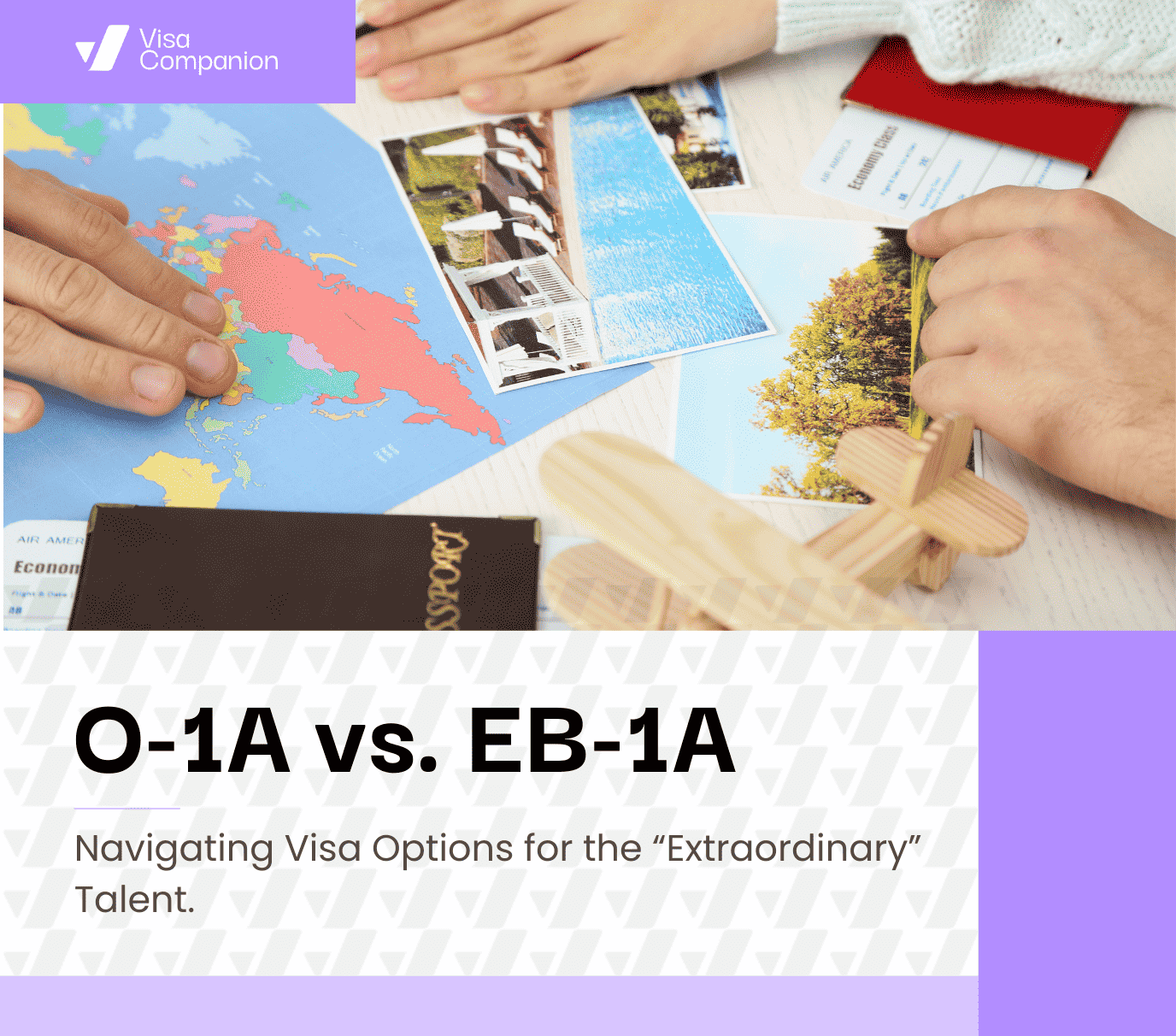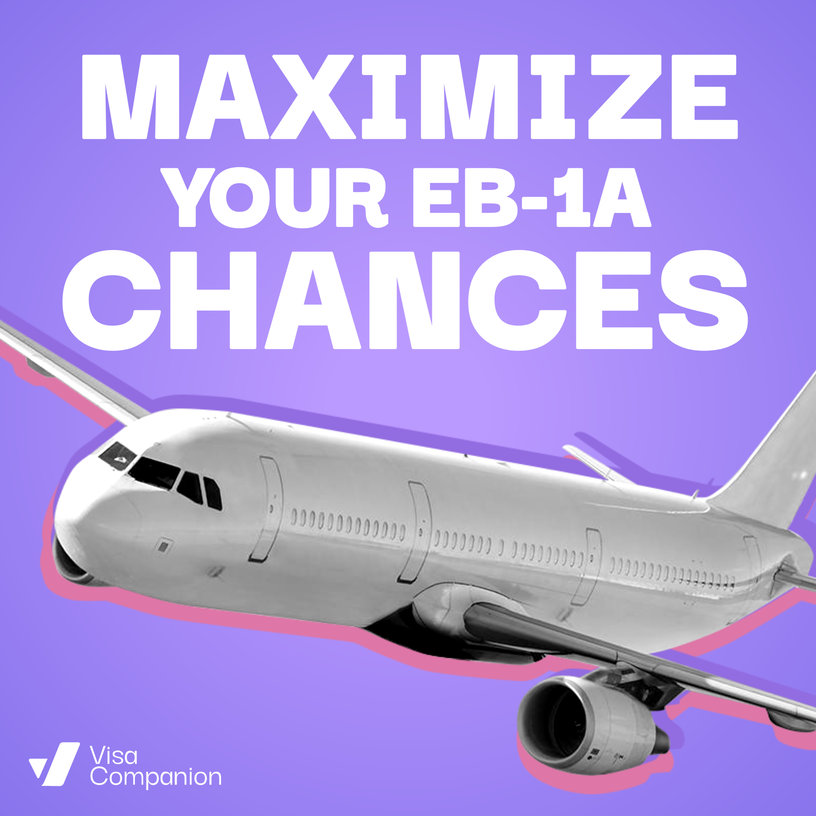Navigating EB2-NIW and EB-1A Visa Timelines: Strategies for Efficient Processing

NAVIGATING EB2-NIW AND EB1-A VISA TIMELINES: STRATEGIES FOR EFFICIENT PROCESSING
When seeking permanent residency in the United States based on professional or extraordinary achievements, two common visa pathways are the EB-2 NIW (National Interest Waiver) and the EB-1A (Extraordinary Ability) visa categories. Both options cater to individuals with unique skills or expertise, but they differ in eligibility requirements and processing routes.
UNDERSTANDING THE VISA OPTIONS: EB-2 NIW AND EB-1A
Eb-2 Niw (National Interest Waiver)
The EB-2 NIW is designed for professionals who hold an advanced degree (master's or higher) or a bachelor’s degree with five years of progressive experience in their field, or individuals with exceptional ability in fields such as science, business, arts, or education can also qualify. Unlike the traditional EB-2 visa, which requires a job offer and a labor certification, the NIW allows applicants to bypass these requirements by demonstrating that their work is in the national interest of the United States.
To qualify for the EB-2 NIW, applicants must:
- Hold an advanced degree (master’s, PhD, or equivalent) or prove exceptional ability in their field, or hold a bachelor's degree with five years of progressive experience.
- Show that their endeavor is of substantial merit and national importance, meaning it benefits areas like the economy, healthcare, technology, or education.
- Show that they are well positioned to advance their proposed endeavor
- Prove that their endeavor will continue to be beneficial to the U.S. and that it would be in the national interest to waive the job offer and labor certification requirements.
This visa category is ideal for researchers, entrepreneurs, and professionals whose work impacts broad sectors of society.
EB-1A (Extraordinary Ability)
The EB-1A category is for individuals who have reached the pinnacle of their field, displaying extraordinary ability in areas such as the arts, sciences, business, athletics, or education. It requires evidence of sustained national or international acclaim. The key difference between EB-1A and other employment-based visas is the high standard of proof required.
To qualify for the EB-1A, applicants must:
- Demonstrate extraordinary ability through extensive documentation, such as awards, published materials, or contributions to their field.
- Provide evidence of recognition in their field at a national or international level, such as winning prestigious awards, judging the work of others, or holding critical roles in renowned organizations etc.
Both the EB-2 NIW and EB-1A provide opportunities to self-petition, meaning applicants do not need an employer sponsor. However, the EB-1A has a higher standard of proof, while the EB-2 NIW focuses more on the potential prospective impact of the applicant’s work to the U.S. Understanding which category best fits your profile and long-term goals is crucial for a successful petition.
EB-2 NIW AND EB-1A VISA PROCESSING TIME
Understanding the processing time for the EB-2 NIW and EB-1A visa categories is essential for effectively planning your path to permanent residency in the United States. Each visa has its own unique timeline, influenced by factors such as USCIS workload, applicant nationality, and whether premium processing is used. Below, we break down the expected processing times for both visa categories.
- Eb-2 NIW (National Interest Waiver) Processing Time
This category allows certain professionals with exceptional ability to bypass the labor certification process. The key steps involve filing Form I-140 and the subsequent adjustment of status or visa application. The processing time for an EB-2 NIW application can vary significantly, but it generally takes between 12 to 18 months for the U.S. Citizenship and Immigration Services (USCIS) to process the petition. The timeline is influenced by several factors:
Initial Petition Processing: Once your I-140 petition is submitted, it may take 8 to 12 months for USCIS to process and make a decision on the petition.
Adjustment of Status (AOS) or Consular Processing: If you are already in the U.S., you can apply for Adjustment of Status (I-485) after your I-140 is approved. This process may take an additional 8 to 14 months. If you are outside the U.S., consular processing could add 6 to 12 months depending on the U.S. Embassy in your country.
Premium Processing: As of 2022, USCIS has made premium processing available for EB-2 NIW petitions, which reduces the processing time to 15 calendar days for the I-140 petition. However, this expedited processing only applies to the I-140 stage and does not affect the subsequent Adjustment of Status or consular processing times.
EB-2 NIW (National Interest Waiver) Visa Timeline
- Processing Time for I-140 Petition:
- Standard Processing: Typically takes 10.5 to 26.5 months, depending on USCIS caseload and location.
- Premium Processing: This option provides a response within 45 days for an additional fee. Note that while premium processing speeds up the I-140 decision, the rest of the process (e.g., Adjustment of Status) is not expedited.
- Why Is EB-2 NIW Processing Longer?
Although the EB-2 NIW skips the labor certification process, USCIS must assess whether you are well positioned to advance your endeavor, whether your work benefits the national interest of the U.S., and if it is of substantial merit and national importance.
- Form I-485 Processing:
Once your priority date is current, you can file for an Adjustment of Status (I-485) or undergo consular processing. This stage typically takes 8 to 14 months for applicants within the U.S.
- Additional Steps for EB-2 NIW:
- Biometrics Appointment: After filing the I-485, USCIS will schedule a biometrics appointment to collect fingerprints, photos, and signatures.
- Employment Authorization Document (EAD) and Travel Permit: You can apply for both alongside your I-485, with typical approval in about 3 months.
- USCIS Interview: Some applicants may be required to attend an interview for final verification of details.
- Request for Evidence (RFE):
If additional documentation is needed, USCIS may issue an RFE, which could extend the processing timeline.
EB-1A (Extraordinary Ability) Visa Timeline
- Processing Time for I-140 Petition:
- Standard Processing: EB-1A petitions are typically processed faster than EB-2 NIW, with processing times between 5.5 to 6.5 months.
- Premium Processing: For an additional fee, you can expedite the I-140 processing time to 15 calendar days.
- Adjustment of Status or Consular Processing:
After I-140 approval, if you are already in the U.S., file for Adjustment of Status (I-485), which takes around 8 to 14 months. If outside the U.S., consular processing typically takes an additional 6 to 12 months.
- Additional Steps for EB-1A:
- Biometrics Appointment: Similar to EB-2, you will need to complete a biometrics appointment.
- EAD and Travel Permit: These are issued around 3 months after filing I-485, granting you employment and travel rights.
- USCIS Interview: Depending on the specifics of your application, an interview may be scheduled by USCIS.
- Request for Evidence (RFE):
EB-1A applications, which require extensive documentation of extraordinary ability, may also receive RFEs if additional information is needed.
ADDITIONAL CONSIDERATIONS FOR BOTH EB-2 NIW AND EB-1A
Priority Date: When filing your I-140 petition, you are assigned a priority date, which determines when you can move forward with either Adjustment of Status (I-485) or consular processing. For applicants from countries with higher visa demand, such as India and China, priority dates may be backlogged, resulting in longer wait times.
Adjustment of Status or Consular Processing: Once your priority date is current, the final step is applying for a green card either via Adjustment of Status if you're already in the U.S., or consular processing at a U.S. embassy abroad.
Ensure all necessary documentation is prepared, including a medical examination before the interview.
Upon approval, you will receive your immigrant visa and, once in the U.S., your green card will be issued. For more detailed information, visit the USCIS website on How to Apply for a Green Card.
By understanding these timelines and processing options, you can navigate the EB-2 NIW and EB-1A visa categories more efficiently. Premium processing can expedite some steps, but it is essential to account for factors like priority dates and USCIS workload**.**
FACTORS INFLUENCING DELAYS
Both visa categories can face delays due to various reasons:
- Requests for Evidence (RFEs): The U.S. Citizenship and Immigration Services (USCIS) may request additional evidence, which can prolong processing times.
- Consular Processing: Issues during the final interview at a U.S. consulate can also lead to delays.
STRATEGIES FOR EFFICIENT PROCESSING
To minimize delays and ensure a smoother process for both EB-2 NIW and EB-1A, consider the following strategies:
Premium Processing: If available for your petition, premium processing can significantly reduce the time for I-140 adjudication. While it incurs an additional fee, the ability to receive a decision within 15 days can be crucial for applicants on tight timelines.
File Complete Applications: Submitting well-organized and thoroughly documented applications can help avoid delays caused by Requests for Evidence (RFEs) or denials. Carefully meet all evidentiary requirements to reduce potential processing holdups.
Monitor Visa Bulletins: Stay up to date on visa bulletins published by the Department of State, as they inform you of whether immigrant visas are available for your priority date, particularly if you are from a country with high demand, like India or China.
By understanding the processing timelines for the EB-2 NIW and EB-1A, and employing strategies such as premium processing and careful preparation, you can effectively navigate the process and move closer to securing your U.S. permanent residency.
Related Blogs

EXPLORE THE PATHWAYS TO U.S. RESIDENCY: UNDERSTANDING THE EB-2 NIW VISA
April 22, 2023The EB-2 visa is one of the most sought-after visa classifications in the U.S. employment-based immigration system. Designed for individuals with advanced degrees or exceptional abilities in their field, this visa provides a pathway to permanent residency (Green Card) in the U.S. In particular, the EB-2 National Interest Waiver (NIW) stands out because it allows qualified individuals to bypass the need for employer sponsorship and labor certification. In this blog, we’ll focus on the EB-2 NIW visa classification—what it is, how to qualify, and the steps to apply. Whether you’re a scientist, entrepreneur, or professional with expertise in a critical field, this guide will provide the comprehensive information you need.

O-1A vs. EB-1A: Navigating Visa Options for the "Extraordinary" Talent
April 22, 2023Explore the differences between the O-1A and EB-1A visas for talented individuals immigrating to the US. Learn about the temporary, sponsored O-1A visa versus the permanent, self-petitioning EB-1A option. Gain clarity on which visa aligns best with your goals.

EB1A: Are You a Leader in Your Field?
Sept 09, 2024Understanding whether you qualify for the EB-1A visa can be challenging, particularly when assessing if you have played a leading or critical role in a distinguished organization. This blog post aims to provide you with clear tools and insights to help evaluate and demonstrate your eligibility under this specific criterion, ensuring you present a compelling case to USCIS adjudicators.

Maximize Your EB-1A Chances: Evaluate Your Memberships
Sept 19, 2024The goal of this post is to help you assess whether you can argue that you meet the second of the ten EB-1A criteria: holding a membership in an association that demands outstanding achievement from its members.